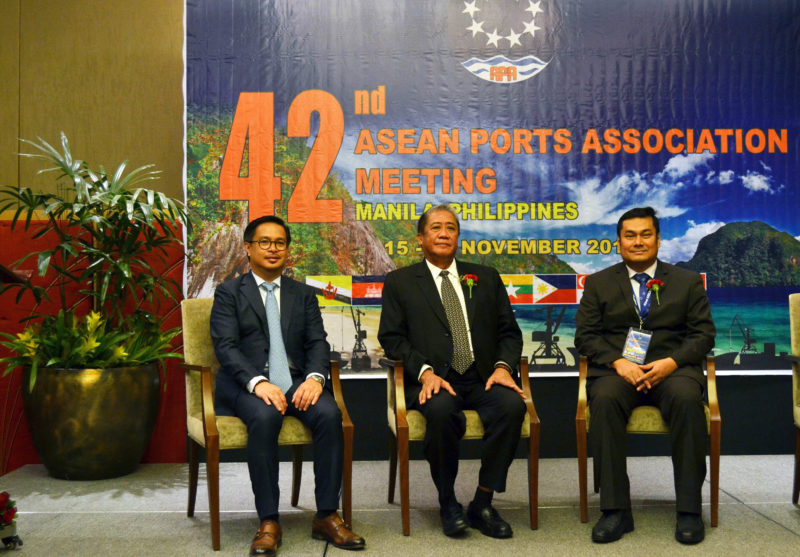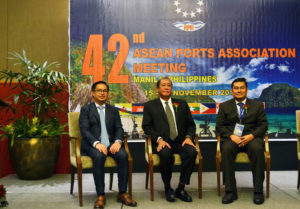

Ports in the Association of Southeast Asian Nations (ASEAN) are encouraged to increase capacity to accommodate the changing nature of the shipping industry, specifically the rise of more shipping alliances and the call of larger vessels at major ports in the region.
In his opening speech at the 42nd Meeting of the ASEAN Ports Association (APA) on Nov 15, APA Secretary General Sandhy Wijaya said the port sector is now facing two major challenges — the “strong bargaining powers of shipping alliances” and complying with initiatives to make ports more environment-friendly.
Wijaya said shipping alliances result in larger vessels, which in turn affect the port industry in two ways. One is that “ports are forced to increase [their] capacity, to deepen the channel and basin, and to improve port operation and IT in order to accommodate larger vessels.”
He said ultra-large vessels have started entering major trade lanes, which will cascade large vessels to smaller trade lanes. This trend, he noted, will force ports to upgrade to accommodate the change in size of port callers.
The bargaining powers of shipping alliances will also “force the ports to structure [their] cost and to redesign [their] business process to increase efficiency” and offer lower tariff, he said.
In an interview with PortCalls on the meeting’s sidelines, Wijaya said more large vessels are now calling ASEAN ports, especially since they have to pass through the Malacca Strait where some ASEAN members such as Malaysia, Thailand, Singapore, and Indonesia are located. Some shipping lines have already introduced bigger vessels that can handle 18,000 to almost 20,000 twenty-foot equivalent units, he noted. Meanwhile, there are in place several alliances involving major carriers while more are expected to start operations in the coming year.
He said ASEAN ports would have to improve their capacity, efficiency, and productivity so as not be left behind.
Green movement
Another challenge is the call for the port sector to implement “green services” and conduct innovations to make it environment-friendly.
“ASEAN ports need to find a way with this challenge by doing more investments in port infrastructure, IT, and people quality,” Wijaya said.
Wijaya said he encourages all APA members “to strengthen our cooperation in order to cope with these challenges.”
At the end of the two-day meeting in Manila, the nine member countries of APA, which include Brunei Darussalam, Cambodia, Indonesia, Malaysia, Myanmar, the Philippines, Singapore, Thailand and Vietnam, are each required to present a paper that will serve as the springboard for future development and cooperation among member countries.
Aside from cooperation to adapt to changes in the shipping industry, the port association official said APA members will vote to comply with two agendas under the ASEAN Transport Strategic Plan 2016-2025 (Kuala Lumpur Strategic Plan) that were assigned to the port association.
The strategic plan, which was endorsed during the 21st ASEAN Transport Ministers meeting, has seven specific goals with 22 actions related to maritime transportation. Of the 22 actions, two need support from APA. These are to enhance the capacity of 47 designated ASEAN ports and improve reliability of technical standards in ports in the region.
For its part, the Philippine Ports Authority will present its Port Infrastructure Development Plan, which identified five priority ports for modernization, namely, Davao, Cagayan de Oro, General Santos, Iloilo Container Port Complex, and Zamboanga ports, already considered international gateways.
“We are developing these ports as these handle majority of our import and export product not only within ASEAN but also worldwide,” Santiago said in an earlier statement. – Roumina Pablo




